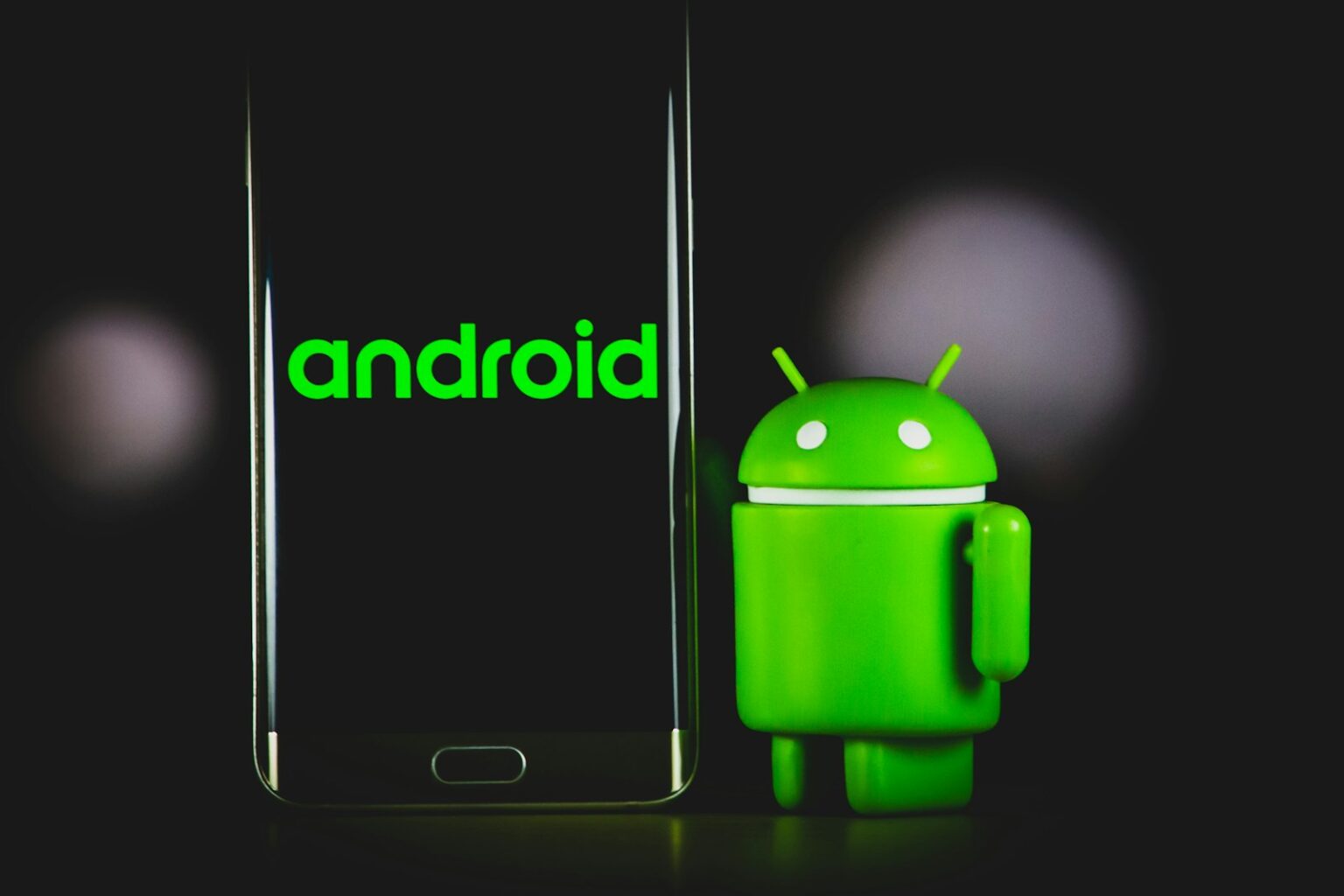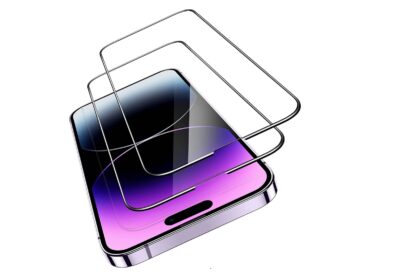Real-time text is an accessibility feature that lets a person send live text during a phone call so each character shows as typed. This helps folks who are deaf or hard of hearing have natural conversations without extra hardware.
On many phones, rtt works inside the Phone app and pairs with TTY support. You can enable the option in settings, place a call with rtt, or switch from voice to text mid-call. The other side sees edits as they happen, unlike standard messages.
RTT uses regular call minutes and availability can vary by carrier or device. Google Fi does not support rtt today. Transcripts live in Recents > Call details on Pixel phones and may differ by manufacturer, so check with your carrier or device maker.
This feature keeps an audio channel active with a mute option. That makes mixed voice and text conversations easy and gives people a quick, discreet way to communicate in real time.
RTT on Android explained: real-time text for accessible, live phone conversations
Typing shows in real time inside the call screen, letting both people follow a stream of text as it happens.
What an rtt call is and how it differs from messaging
An rtt call sends each character instantly during a call, so the flow feels like a spoken exchange rather than delayed chat. This gives a natural conversational rhythm for people who prefer to type while keeping the audio line open.
Unlike typical messaging apps, edits and deletions appear to both parties. That makes back-and-forth faster and more immediate than data-based messaging services.
rtt versus tty: FCC transition and compatibility
The FCC supported a move from legacy tty hardware to modern real-time text. OEMs in the U.S. now ship devices with rtt support so more users gain accessible calling options.
Compatibility with tty remains important, but some limits can occur when old hardware or networks interwork with full rtt features.
- Instant character send for live conversation
- Audio stream stays active with mute controls
- Works without special hardware on most smartphones
| Capability | rtt | tty |
|---|---|---|
| Character delivery | Live, character-by-character | Buffered send, older pacing |
| Audio support | Audio stream included with mute | Often separate or limited |
| Hardware needs | No extra device required | Dedicated hardware may be needed |
| Regulatory status | FCC-backed transition; OEM support required | Legacy technology being phased out |
Availability, carriers, and requirements in the United States
Carrier support, phone model, and account type determine whether live text in a call works for you. Check with your wireless provider to confirm that your number has the right provisioning before relying on this feature. Incoming live text is enabled automatically in the U.S., but outbound options may need activation in account settings.
Supported devices, service plans, and why settings may differ
Device model, Android version, and OEM skin affect labels and menu locations. Google Pixel, Samsung Galaxy, and other smartphones can show different menu paths for the same option.
Your line’s plan or business account may also restrict features. Contact customer service if the calling option does not appear on your phone.
Minutes, rates, and roaming: billing and travel limitations
Live text travels over standard telephony, so it usually uses voice minutes and follows carrier rates. That matters if your plan meters minutes or charges for international calls.
Roaming abroad generally disables the feature. Plan ahead and pick alternate relay or messaging services when you travel.
Important exceptions: Google Fi support and other caveats
A noteworthy exception in the U.S. is Google Fi; the service currently does not support this accessibility option. Some carriers add extra call controls—merge, hold, or switch to voice—while others do not.
- Interworking with legacy tty or relay services may limit certain behaviors.
- Account provisioning can prevent enabling the feature even when a phone supports it.
| Area | Typical behavior | What to check |
|---|---|---|
| Device support | Varies by model and OS | Phone settings, manufacturer support page |
| Billing | Uses voice minutes; follows calling rates | Plan details, international calling rules |
| Roaming | Usually unavailable abroad | Carrier roaming policy |
| Carrier exceptions | Some add call controls; Google Fi does not support | Carrier help desk or account provisioning |
How to turn on RTT in the Phone app settings on Android
Quick steps make enabling live text simple. Open the Phone app, tap Settings, then Accessibility. Choose Real-time text (RTT) to enable the feature for your line.
Step-by-step path
Follow: Phone app > Settings > Accessibility > Real-time text (RTT). From there pick a visibility setting that fits your needs.
Choose visibility
The three options are Not visible, Visible during call, and Always visible. Not visible keeps the control hidden but still allows incoming text. Visible during call shows the control after calls connect.
If you select Always visible, the RTT button appears on the dialer, Contacts, Recents, and Favorites so you can start an RTT call right away.
Samsung Galaxy differences
On Galaxy phones the path reads: Settings > Accessibility > Hearing enhancements > Real Time Text > RTT call button. Toggle when the button should appear.
- You can switch mid-call when Visible during call or Always visible is set; just tap RTT.
- RTT includes an audio stream, so mute/unmute still works.
- If the option is missing, update software and check carrier support or tty provisioning for your device.
Using RTT during a phone call: start, switch, and manage conversations
Make an RTT-enabled call by opening the Phone app, picking a number from Dialpad, Contacts, Recents, or Favorites, then tap RTT. The other person sees an on-screen invitation while the phone rings. Accepting joins a live text session without ending the voice channel.
Place a call from common screens
Open Dialpad or pick a contact, then tap RTT to start an rtt call. If your setting shows the control during calls, you can invite live text any time without redialing.
Switch mid-call and return to voice
If you began in voice, choose the rtt option in the in-call menu to switch to text. To resume spoken audio only, use the Switch to voice option. These actions keep the same session active so no new call starts.
Merge, hold, audio controls
Select carriers permit Merge and Hold while in rtt sessions. Mute toggles the audio stream so you can type without background noise. Availability varies by carrier and plan, so check account options if controls do not appear.
Real-time etiquette and what the other person sees
Text appears character-by-character, including corrections and deletions, so aim for brief, clear phrases. That preserves a natural conversational flow and reduces distraction for the other person.
| Action | Typical behavior | What to check |
|---|---|---|
| Start from Dialpad/Contacts | Tap RTT; recipient gets invite | Phone app visibility setting |
| Switch mid-call | Instant switch to live text | RTT set to Visible during call or Always visible |
| Merge/Hold | Available on some carriers | Carrier features, plan limits |
| Audio controls | Mute, unmute while typing | In-call menu options |
Emergency services and relay: when to use RTT for urgent situations
If you cannot speak aloud, place a 911 call using live text so dispatchers read your messages as you type. This helps a person give crucial details fast during a crisis.
Dial 911 directly when it is an emergency. Use a live-text session rather than 711 relay for urgent needs. Relay adds an intermediary and can slow response time.
On some carriers, emergency services accept live text even when the control is set to Not visible. That gives an extra safety option when time matters.
- RTT calls include an audio stream; mute keeps the line quiet while you send text.
- Some 911 centers still answer with TTY; RTT tty interworking works but may change how characters appear.
- If roaming or coverage is poor, live text may not work; have backup plans for those situations.
| Situation | RTT behavior | TTY behavior |
|---|---|---|
| Emergency call to 911 | Live text plus audio; some carriers allow even if hidden | Supported by some PSAPs; older pacing |
| Silent reporting | Mute audio while typing | May require dedicated hardware |
| Roaming or weak network | Often unavailable | Often unavailable |
Start an emergency text with your location and a short description. Keep replies brief and answer questions in order so the dispatcher can act quickly. After the call, review stored transcripts if your phone saves them for follow-up.
Transcripts, privacy, and managing your call history
Transcripts from live text sessions sit inside your call history so you can review what was typed after a call ends.
To view a transcript: open the phone app, go to Recents, tap the specific call, choose Call details, then tap See transcript if that option appears.
To remove a transcript, delete the call from your call history. You can also clear the Phone app data in Android settings to erase stored content for that app.
Pixel-specific storage note
On Google Pixel devices, transcripts remain only inside the phone app. Other apps cannot access those logs, which adds privacy by design.
That behavior differs across devices. Some manufacturers store transcripts in device backups or share logs with other apps, so check your maker’s documentation for retention and access details.
Practical privacy tips and troubleshooting
- If you share a phone or back up to the cloud, review backup and privacy settings to control where transcripts go.
- For sensitive entries, delete the related call and clear app data promptly.
- Keep your phone software and the phone app updated for privacy fixes.
- If tty interworking occurs, expect transcript differences due to character mapping limits.
- When contacting support, have your device model and number ready to confirm storage behavior.
| Item | Typical behavior | What to check |
|---|---|---|
| View transcript | Phone app > Recents > Call details | Phone app visibility and app updates |
| Delete transcript | Remove call entry or clear app data | Android settings > Apps > Phone app |
| Storage rules | Pixel: in-app only; other devices vary | Manufacturer privacy page |
What Is RTT Calling On Android and How Do I Use It? Conclusion
Key takeaway: This feature turns a standard phone session into a hybrid voice-plus-typing conversation that feels immediate.
In short, rtt calling makes real-time text easy to access. Turn rtt on via the Phone app’s Accessibility settings, pick a visibility option, then test with a trusted contact. You can switch between voice and text during a call and, on select carriers, merge or hold without ending the session.
Remember that rtt uses call minutes, may not work while roaming, and some providers like Google Fi don’t support the service. For emergencies, dial 911 with live text rather than using 711 relay. Review transcripts in the Phone app; Pixel devices keep them in-app only for better privacy.
Final tip: Set visibility to Always visible for quick access on your dialer and verify device and carrier support before relying on rtt calls in critical situations.
FAQ
What does real-time text mean for accessible, live phone conversations?
Real-time text lets people send typed words instantly during a phone call so both sides read messages as they appear. It’s built for quick, back-and-forth exchanges during voice calls and meant to help people who are deaf, hard of hearing, or have speech disabilities. Unlike standard text messaging, the stream appears inside the active call so the flow feels like a live conversation.
How does an RTT call differ from regular texting or chat apps?
RTT delivers characters immediately over the voice call channel rather than sending discrete messages. Chat apps bundle and deliver messages after you hit send; RTT shows each keystroke (or small groups of characters) in real time. That low latency is key during live calls and emergency situations.
What about TTY — how does RTT compare and why is the FCC involved?
RTT replaces legacy TTY technology as the FCC supports a transition to modern, IP-friendly solutions. RTT is more compatible with smartphones and apps while maintaining support for relay services and emergency access. Many carriers and devices now include backward compatibility or conversion tools for existing TTY users.
Which carriers and devices in the United States support this feature?
Major U.S. carriers and recent Android smartphones generally support real-time text, but availability varies by model, OS version, and plan. Check your carrier’s accessibility pages and your phone maker’s support site for exact device compatibility and any required software updates.
Are there charges, minutes, or roaming limits when using this service?
Billing depends on your carrier and plan. RTT usually uses the voice channel, so normal voice minutes or rates can apply. Data-based implementations or relay services might have separate terms. Roaming can limit feature availability or incur extra charges, so confirm details before traveling.
Are there exceptions like Google Fi or other caveats I should know about?
Yes. Some providers such as Google Fi may support RTT differently or not at all on certain devices. Device manufacturer customizations, carrier firmware, or regional rules can affect options. Always verify with both carrier and phone maker if you rely on this for critical use.
How do I enable real-time text in the Phone app settings on Android?
Open the Phone app, tap the three-dot menu or Settings, go to Accessibility, then find Real-time text (RTT) or similar wording. Turn the feature on and choose how text appears during calls. Exact menu names and paths can differ by brand and Android version.
What visibility options are available and what do they mean?
Typical visibility choices are Not visible, Visible during call, and Always visible. Not visible hides the RTT panel until you start RTT. Visible during call shows the text area only while a call is active. Always visible keeps the RTT text field on screen so it’s ready any time.
How do Samsung Galaxy phones vary in where I find this option?
Samsung often places RTT under Phone app > Settings > Accessibility, but some models use Settings > Accessibility > Hearing enhancements. If you can’t find it, search Settings for “real-time” or check Samsung’s support pages for your Galaxy model.
How do I place an RTT call from my dialer, contacts, or recents?
Start a call from the dialer, Contacts, Recents, or Favorites as usual. If the other side or your device supports RTT, an on-screen option to start RTT will appear. Tap the RTT button to begin sending text in real time while the call connects.
Can I switch from voice to real-time text mid-call and back?
Yes. Many devices let you enable RTT during an active call and later turn it off to return to voice-only. Look for the RTT or text icon in the call screen. Carrier and handset limits may apply, so test with noncritical calls first.
Can I merge calls, put calls on hold, or control audio while using this feature?
Features like merge, hold, and audio controls depend on carrier support and phone software. Some carriers allow full call handling with RTT, while others restrict certain functions during a real-time text session. Check carrier documentation for limits.
What should I expect other people to see as I type during a live session?
Recipients see text appear in near real time, often character-by-character or in short bursts. This reveals typing flow, corrections, and pauses, so simple etiquette helps: type clearly, avoid sensitive info, and let the other person know if you’re making corrections.
Can I use real-time text when calling 911 or other emergency services?
Many emergency centers accept real-time text, and it can be lifesaving for people who can’t use voice. However, procedures vary by jurisdiction. Avoid using relay numbers like 711 for 911; initiate the emergency call directly and enable RTT if supported. Confirm local PSAP capabilities ahead of time.
How does audio, mute, and visibility behave during emergency RTT calls?
During an emergency call, audio may remain active alongside text. Muting your microphone typically only affects audio, not the RTT stream. Visibility settings determine whether dispatchers see your typing in real time, so use the mode your device offers and follow dispatcher guidance.
Where are RTT transcripts stored and how do I delete them?
The Phone app may save RTT transcripts in the call record or a device-specific location. Look under the call details in the Phone app to view or remove transcripts. Some devices like Google Pixel have unique storage behaviors, so check your manufacturer’s guide for exact steps.
How can I check whether my Pixel or other phone stores RTT data differently?
Review your phone’s support documentation or search Settings for Call history and Accessibility storage. Pixel phones sometimes keep richer call logs or local transcripts. If privacy is a concern, use the Phone app controls to delete entries and adjust permissions.
























